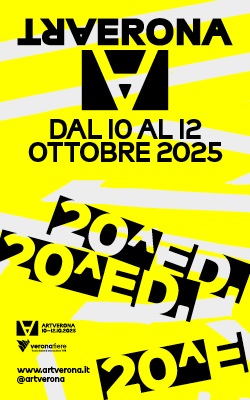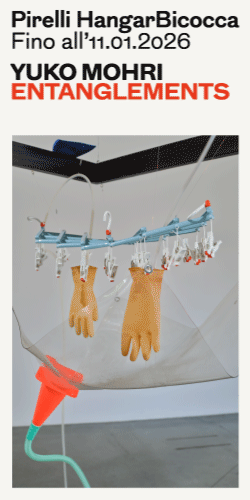Scroll down for English text
Si apre all’insegna del grande tema del “Coltivare cultura”, ICASTICA: la kermesse che inaugura il 27 giugno ed è visibile nella città di Arezzo fino al 27 settembre 2015. I numeri suggeriscono l’entità del progetto: oltre 100 artisti invitati a ben 5 mostre allestite in circa 40 spazi, dentro e fuori Arezzo. “L’arte, come dimensione dell’esperienza, dunque della storia, è qui chiamata a esperire, interpretare, simboleggiare la Cultura: base del vivere primario, che prima ne è determinato e poi determina” afferma Fabio Migliorati, Direttore della rassegna. “ICASTICA si occupa di linguaggi creativi nel tempo – dal materiale artistico al documento, dalla testimonianza all’esperienza; si propone nelle due sezioni arte + eventi e progetti, con un rigoroso Comitato Scientifico che provvederà anche a stabilire i premi da assegnare agli artisti in concorso.”
Chiese, basiliche, gallerie d’arte, Musei – da quello Statale d’arte Medievale e Moderna alla Casa Museo di Giorgio Vasari – palazzi, piazze loggiati: queste le tante locations che optitano i vari progetti curatoriali che portano la firma di Adam Carr, Rita Selvaggio, Ilaria Gianni, 999 contemporary, Atto Belloli Ardessi con Ginevra Bria.
Segue una presentazione e una breve intervista con il curatore della mostra “Adventures in Bronze, Clay & Stone”, Adam Carr. La mostra è ospitata nella Chiesa della Madonna del Duomo Vecchio, in via Oberdan 61, sede della galleria Furini Arte Contemporanea.
Artisti invitati: Nina Beier, Claire Fontaine, Tim Foxon, Simon Fujiwara, Sean Edwards, Ryan Gander, Lydia Gifford, May Hands, George Henry Longly, Hannah Lees, Ruairiadh O’Connell, Joe Orr, Jesse Wine

From June 26 to Semptember 27 the historic centre of Arezzo will host ICASTICA 2015 – Cultivating Culture, a multidisciplinary art festival in which the works of over a hundred of the most important and interesting contemporary artists will be exhibited in almost forty indoor and outdoor spaces of the city.
Within this event, Chiesa della Madonna del Duomo Vecchio, in via Oberdan 61 – home of Furini Arte Contemporanea gallery – will host ADVENTURES in BRONZE, CLAY & STONE, a group show curated by Adam Carr with artworks by Nina Beier, Claire Fontaine, Tim Foxon, Simon Fujiwara, Sean Edwards, Ryan Gander, Lydia Gifford, May Hands, George Henry Longly, Hannah Lees, Ruairiadh O’Connell, Joe Orr and Jesse Wine.
We asked some questions to Adam Carr about this particular exhibition project.
ATP: Could you introduce us to “ADVENTURES in BRONZE, CLAY & STONE”? Which kind of adventures will you present and why did you decide to use this particular title for the show?
Adam Carr: ADVENTURES in BRONZE, CLAY & STONE is presented in the context of Icastica, Arezzo’s city arts festival, and takes as its starting point Arezzo’s history and mastery in clay ware. Arretine ware, which originated in the city as early as 100 b.c, is known the world over and is perhaps one of its most celebrated exports. Another departing point is the Chimera of Arezzo, a bronze sculpture made in 400 b.c. and discovered near the Porta San Lorentino of Arezzo, Italy (ancient Arretium) in 1553. Against this backdrop, ADVENTURES in BRONZE, CLAY & STONE presents works by contemporary artists in bronze, clay or stone, or a mix of two or more of those materials. A lot of my titles for exhibitions explain what will or might happen inside of the actual show. The word ‘adventures’ might suggest a certain playfulness, which is also something that the works in the show deal with – contrasting the historical weight and seriousness attached to such materials, especially bronze. I have been thinking a lot about shows based on medium specificity, so the title was thought about to allow for other adventures to happen in the future. A show about painting is in the works.
ATP: In ADVENTURES in BRONZE, CLAY & STONE you present artworks that examine the current use of these ancient materials. Which criteria did you follow in the selection of the pieces?
AC: There was no criteria per se, although the location of the show was a thinking point. A lot of the artists I’ve included in the show I know very well, and with a lack of time to put the show together, the conversations about the show had to be somewhat quick, and it helps of course if there is already an understanding and sense trust on both sides of the conversation. The group of artists include those whose works are incredibly diverse and not bound to using one particular medium or way of working, but also those who are associated with the use of bronze, clay and or stone almost solely.
ATP: The show takes place in a former church in Arezzo. What kind of influences this particular location and Arezzo’s history and mastery in clay ware have had on the project? How did you conceive the display?
AC: Arezzo is steeped in history. Knowing about the location of the show – the church – informed my decision to try and speak about history and antiquity on both macro and micro levels. A church is not the easiest of places to install a show and of course partly informed the selection of the works and their display, as well as the presentation of the show overall.
ATP: The exhibition involves artists whose work is associated with bronze, clay and stone, as well as artists whose practices’ are not commonly linked with the employment of these mediums. Why did you choose to involve both?
AC: Other than what I mentioned previously, the selection was influenced by the idea of trying to allow a diverse range of approaches to enter the exhibition. It includes new works by artists as well as existing pieces. I was interested in how a few of the artists would respond to the idea of the show — artists who have not previously used or perhaps even thought about using bronze, clay and stone, and are much more attached with using ‘new’ technologies and materials.
ATP: Which message do you want to convey with this project? In your opinion, do bronze, clay and stone still have a potential as materials for contemporary artists?
AC: The exhibition takes into account the history and practice of BRONZE, CLAY & STONE in relation to not only Arezzo, but also to today’s rapid technological growth, particularly the applications, uses and ideas of technology, and the impact they have on art production. The fact that the show includes highly internationally active artists, as well as those who are younger and more emerging, is an indication that bronze, clay and stone are very much still full of potential and open to new ideas.
Adam Carr is an international curator and writer, and curator for MOSTYN I Wales.











